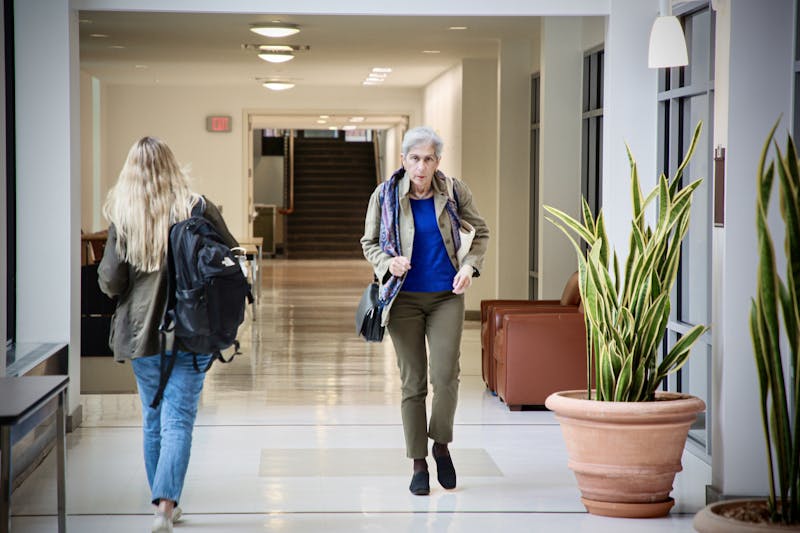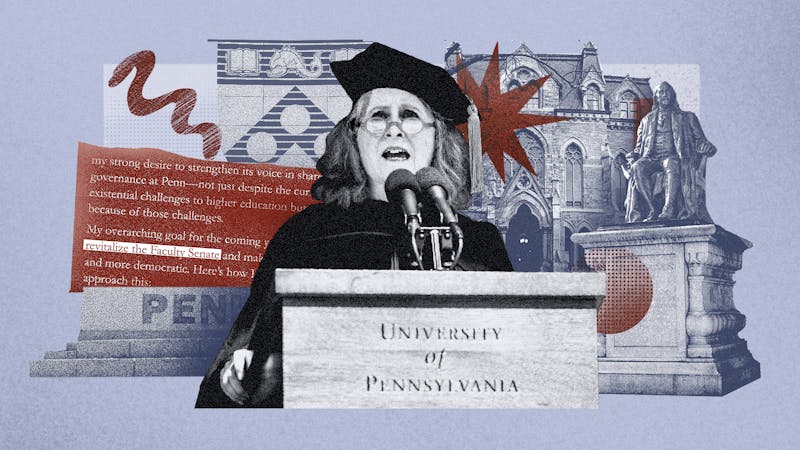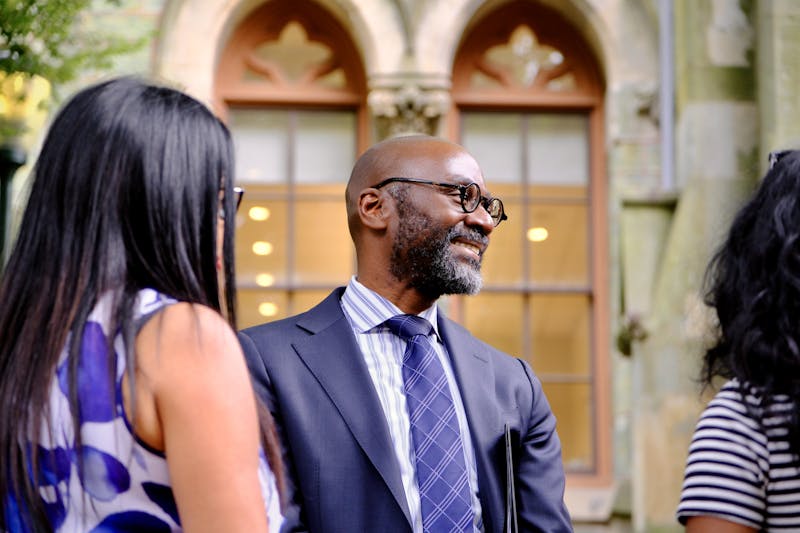Twenty-five seasons ago a cohesive, talented group of Ivy Leaguers marched through the NCAA Tournament to a destination that nobody thought was possible.
Sure it had happened before in the history of the Ancient Eight. But even that was an anomaly.
In 1965, Princeton rode a one-man wrecking crew to the Final Four. It just happened that the best basketball player in the country during the 1965 season was also a future presidential candidate.
Bill Bradleys don't play in the Ivy League often. Princeton has received 140 Rhodes scholarships since the inception of the award in 1902. It has had one National Player of the Year. The combination of the two is Superman.
So when Penn defeated St. John's in Raleigh in the 1979 Eastern Regional Finals to advance to the Promised Land, people noticed. The Quakers did not have a Bradley, simply a base of talented players who had played together four consecutive seasons.
Twenty-five seasons have passed since the Quakers went west to Salt Lake City and the Final Four, and since then no Ivy League team has been close to returning.
The Tigers have made some noise in the NCAA Tournament in the past 15 years, but only in isolated games. In 1989, the Tigers fell by one point to Alonzo Mourning's Georgetown squad, 50-49 -- it remains the closest a No. 16 seed has come to knocking off a No. 1 seed in men's NCAA Tournament history.
Princeton had a similarly remarkable performance in 1996. The Tigers methodically slowed down the game against defending champion and No. 4 seed UCLA, and eventually defeated the Bruins, 43-41.
But one game is not the same as a run to the national semifinals.
The lack of an Ivy squad even near the Final Four in the past 25 years begs the question -- is it possible for an Ancient Eight school to go to the Final Four in the modern era?
"No," said Bob Staak, an assistant coach for the 1979 Penn team and assistant coach of five different NBA squads. "You don't even have to finish the question. It won't happen again."
Opinions are mixed about whether an Ivy squad could make it to the Final Four in the present day. The odds are certainly not in favor of the occurrence.
Ancient Eight schools clearly do not get the same caliber of recruits as they did in the past. The 1979 team -- from which every player graduated -- was viewed as a squad with suspect admission cases and scrutiny has increased since then.
The day after Penn fell to Michigan State, Eric Lincoln wrote an extensive article in The New York Times entitled: "Penn's advances focus attention on admissions."
The article acknowledges the investigations by the Penn Senate Advisory Committee into certain individual players gaining admission, implicitly questioning Penn's policies.
Bob Weinhauer, the coach of the 1979 Penn Final Four team, who went on to be the general manager for the World Champion Houston Rockets in 1994 and 1995, discounts criticism, particularly because of the fact that each of the players on the Final Four squad graduated.
"I know that there were many articles written along those lines," he said. "To my knowledge, every one of the kids we had were recruited by Princeton or Columbia or any of the other Ivy League schools. I didn't take any stock in it."
@DP Article 2003:Syracuse coach Jim Boeheim has seen the evolution of Ivy League recruiting policies. In the third round of the 1979 NCAA Tournament, his Orangemen fell to a Penn team whom he had largely recruited.
Coming out of high school, both Tony Price and James Salters received close looks from Syracuse.
"Today the Ivy League doesn't get those guys," Boeheim said. "In those days, Princeton and Penn had some of the great players in the country."
North Carolina coach Dean Smith also attempted to recruit players who ventured to Penn and Princeton, highlighted by Princeton's Geoff Petrie and Bradley.
Smith sees the Ivy League's decision not to implement the freshman eligibility rule before the 1972-1973 season as the beginning of a slippery slope for the Ivy League before 1972, freshman basketball players were not permitted to play varsity basketball. The Ancient Eight first allowed freshmen to compete on the varsity level in the 1979-1980 season the year after Penn went to the Final Four.
Though the Quakers were still able to wrestle players like Price, Salters and Bobby Willis away from top basketball powerhouses in the mid-'70s, Smith sees the seven-year period as the time when the Ivy League began to show a difference in philosophy.
Price remembers getting about two bags worth of recruiting letters during his senior year in high school. While that pales in comparison to the attention his son A.J. who recently committed to Connecticut has received, Penn still managed to persuade him to take his talents to the Palestra hardwood.
Though there is no clear dominant force in modern college basketball, Boeheim acknowledges that the difference between the top-notch teams and Ivies is slowly becoming larger.
"I don't think the top teams are going to come down enough for an Ivy League team to get to the Final Four," Boeheim said.
"It is possible but not probable."
The escalating cost of a higher education in America, particularly among Ivy League universities, coupled with the fact that Ancient Eight schools do not give athletic scholarships, makes it that much harder to attract elite talent.
"I think you always want to think that it's possible and that you always try to make it possible," current Penn coach Fran Dunphy said. "It's probably less possible now than it was 25 years ago."
Weinhauer does not believe that the Ivy League should begin giving out scholarships, but acknowledges that should an athlete not qualify for financial aid, it would be extremely difficult to recruit him.
The opposite camp has a strong dissenting opinion.
"I think it's criminal that the Ivy League doesn't join the real world and offer athletic scholarships; either that or get out of Division I entirely," Matt White, the starting center on the 1979 squad, wrote in an e-mail. "As it is now, Ivy League teams, with a few exceptions, are the laughingstock of college basketball.... Duke and Stanford seem to do alright. Why can't we?"
The 1979 Penn team knew it could be good when the season started they had taken a talented Duke team to the wire in the 1978 tourney and returned four starters. They didn't shoot for the Final Four at the beginning of the season, but they knew they could do some damage if they first got through the Ivy League.
As for a trip to San Antonio on the first weekend of April this season?
"As we're sitting here at the beginning of November, to think about the Final Four almost seems ridiculous," current Penn co-captain Jeff Schiffner said.
But impossible?
"Do I think it takes the stars to be aligned a little bit? Yeah, maybe. I don't think you can count out anything as far as that's concerned," Schiffner said.
Recruiting one of the top players to come to an Ivy League school seems unlikely, but it is not out of the question, at least in terms of pure skill.
Yet it's going to take more than one player even if that one player is someone like Bradley.
"It's going to be hard to win in the tournament with only two or three players," Price said.
"Unless you have someone like Moses Malone. And chances of him playing in Philly is more likely that he'd be playing for the Sixers than Penn."
Jud Heathcote, the coach of the 1979 Michigan State NCAA Championship team, cited David Robinson as an example of the type of player that could vault an Ivy squad to the top of the nation. Robinson grew seven inches during his four years at Navy to become a 7'1" senior.
There haven't been many Robinsons in NCAA history, though.
Recruiting a player like "The Admiral" remains a possibility in the future it just isn't probable.
"I didn't realize it had been 25 years," Heathcote said. "And it might be another 25 years."
The Daily Pennsylvanian is an independent, student-run newspaper. Please consider making a donation to support the coverage that shapes the University. Your generosity ensures a future of strong journalism at Penn.
DonatePlease note All comments are eligible for publication in The Daily Pennsylvanian.







